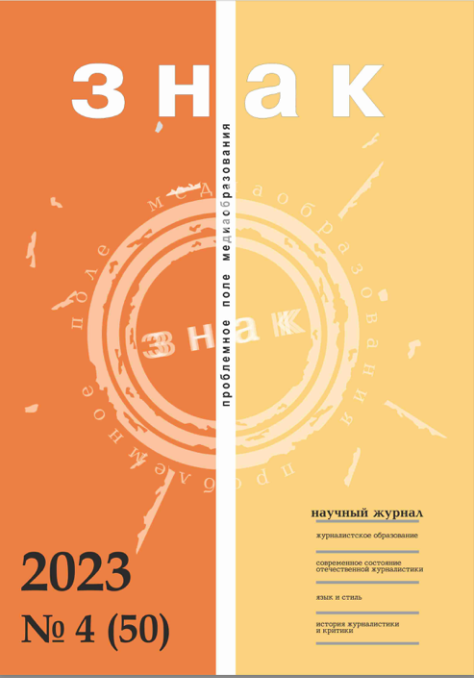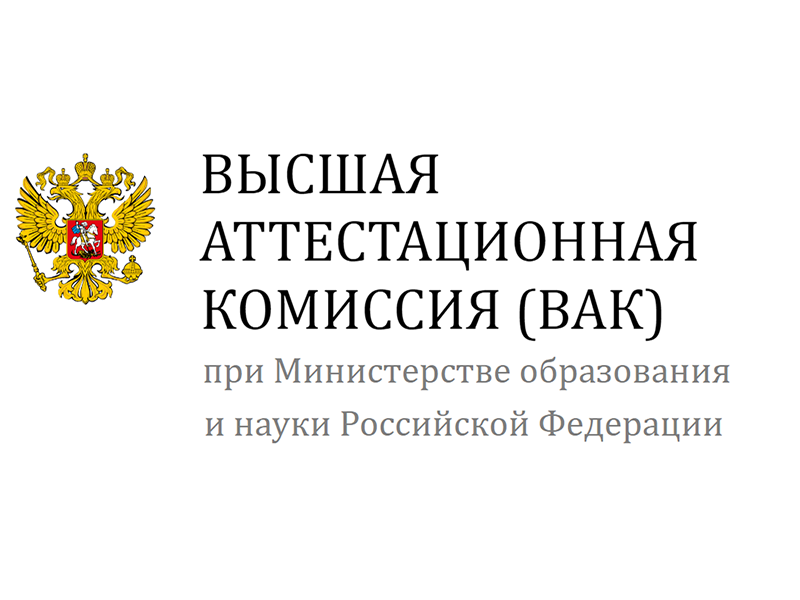Социальная сеть как пространство для распространения экстремистского контента: результаты анкетирования обучающихся профессиональных образовательных организаций
DOI:
https://doi.org/10.47475/2070-0695-2023-50-4-47-54Ключевые слова:
социальные сети, контент, экстремистские проявления, медиабезопасность, обучающиеся, профессиональная образовательная организация, социологический опросАннотация
В статье рассматриваются социальные сети как пространство для распространения экстремистского контента на примере мнения и опыта студентов профессиональных образовательных организаций. Материалом исследования выступили результаты социологического опроса студентов профессиональных образовательных организаций Челябинской области (ПОО) (N=16169). Исследование проводилось с 16 по 31 января 2023 года. В качестве выводов авторы отмечают популярность социальных сетей ВКонтакте и Телеграм, как следствие, необходимость исследовать их на содержание экстремистского контента. Опрос показал, что респонденты сталкиваются с материалами деструктивного характера (и сами подвергаются случаям дискриминации по национальному или религиозному признаку), а также с активной и агрессивной пропагандой национальных, религиозных и общественно политических взглядов друзьями из социальных сетей на их страницах. В качестве наиболее часто встречающихся угроз экстремистского характера – распространение искаженной, неверной информации, публичное оправдание насилия, терроризма; пропаганда запрещенной атрибутики, символики и призывы к свержению власти, конституционного строя. Также в статье обозначены рекомендации по формированию антиэкстремистского сознания у молодежи, в частности, у обучающихся профессиональных образовательных организаций такие как: развитие у обучающихся критического мышления, в том числе при потреблении контента социальных сетей; формирование знаний об ответственности за распространение и одобрение экстремистского контента; распространение через социальные сети, в частности сообщества ВКонтакте образовательных организаций, в доступной современной форме профилактирующего контента, а также использование метода вовлечения обучающихся в создание подобного рода контента. Следовательно, контент экстремисткой направленности, публикуемый в социальных сетях, является одной из проблем медийной безопасности среди молодежной аудитории.
Благодарности: Исследование частично выполнено при финансовой поддержке Российского научного фонда Конкурса «Проведение фундаментальных научных исследований и поисковых научных исследований отдельными научными группами» (региональный конкурс) № 22–18–20011 «Цифровая грамотность: междисциплинарное исследование (региональный аспект)».Библиографические ссылки
Butenko, A. S. (2019). Ekstremizm v seti Internet: ponyatie i sushchnost’ [Extremism on the Internet: concept and essence]. Yurist -Pravoved, 2 (89). 57–61. (In Russ.).
Butkevich, S. A. (2018). Ekstremizm i terrorizm v kiberprostranstve: vyyavlenie, nejtralizaciya i preduprezhdenie [Extremism and terrorism in cyberspace: detection, neutralization and prevention]. Vestnik KRU MVD Rossii, 1 (39). 17–22. (In Russ.).
Domracheva, S. A. (2016). K voprosu o psihologo-pedagogicheskoj profilaktike ekstremizma v molodezhnoj srede [On the issue of psychological and pedagogical prevention of extremism in the youth environment]. Pedagogicheskij zhurnal, 4. 15–25. (In Russ.). Dubovik, N. G. (2018). Ugroza ekstremizma v seti Internet [The threat of extremism on the Internet]. Kriminologicheskij zhurnal, 2. 17–20. (In Russ.).
Ivanova, L. A. (2019). Inkorporirovanie mediaobrazovaniya v programmu podgotovki specialistov srednego zvena po special’nosti 44.02.06 Professional’noe obuchenie (po otraslyam) [Incorporation of media education into the training program for mid-level specialists in the specialty 44.02.06 Vocational training (by industry)]. Sovremennoe sostoyanie mediaobrazovaniya v Rossii v kontekste mirovyh tendencij (k 65-letiyu pochetnogo prezidenta Associacii kinoobrazovaniya i mediapedagogiki Rossii, professora A. V. Fedorova). Taganrog: Rostov State Economic University «RINH». 139–146. (In Russ.).
Kashkarov, A. A. (2019). O nekotoryh osobennostyah preduprezhdeniya rasprostraneniya informacii ekstremistskoj i inoj destruktivnoj napravlennosti v informacionno-telekommunikacionnyh setyah, v tom chisle seti «Internet» [On some features of preventing the dissemination of extremist and other destructive information in information and telecommunication networks, including the Internet]. Uchenye zapiski Krymskogo federal’nogo universiteta imeni V. I. Vernadskogo. YUridicheskie nauki, 3. 352–357. (In Russ.).
Kovaleva, L. A. (2019). Mediaobrazovatel’naya deyatel’nost’ v srednem professional’nom obrazovanii [Media educational activities in secondary vocational education]. MEDIAObrazovanie: vektory integracii v cifrovoe prostranstvo : Materialy IV mezhdunarodnoj nauchnoj konferencii. Compiled by A. A. Morozova. Chelyabinsk: Chelyabinsk State University. 197–201. (In Russ.).
Konovalova, D. T. & Musifullin, S. R. (2022). Formirovanie mediagramotnosti u studentov srednego professional’nogo obrazovaniya [Formation of media literacy among students of secondary vocational education] .XVII akmullinskie chteniya : Materialy Mezhdunarodnoj nauchno-prakticheskoj konferencii. Volume II. Ufa: Bashkir State Pedagogical University. M. Akmully. 286–288. (In Russ.).
Malakaev, O. S. (2018). Ekstremizm v social’nyh setyah [Extremism in social networks]. Vestnik IKIAT, 2 (37). 83–86. (In Russ.).
Nesterov, D. O. (2022). Protivodejstvie terrorizmu i ekstremizmu v uchrezhdeniyah srednego professional’nogo obrazovaniya [Counteraction to terrorism and extremism in institutions of secondary vocational education] Vestnik Nizhegorodskogo instituta upravleniya, 3 (65). 25–29. (In Russ.).
Rudik, M. V. & Volkov, D. V. (2017). Social’nye seti kak sredstvo rasprostraneniya ekstremizma [Social networks as a means of spreading extremism] Vestnik KRU MVD Rossii, 2 (36). 32–35. (In Russ.).
Siranashvili, L. A. & Savel’eva, M. D. (2018). Ekstremizm v sovremennom obshchestve: internet kak faktor rasprostraneniya ekstremizma sredi rossijskoj molodezhi [Extremism in modern society: the Internet as a factor in the spread of extremism among Russian youth] Molodoj uchenyj, 50 (236). 447–449. (In Russ.).
Stepanyan, G. G. (2019). Informacionno-obrazovatel’naya i medijnaya sreda obrazovatel’nogo prostranstva v SPO [Information- educational and media environment of educational space in secondary vocational education]. Problemy sovremennogo pedagogicheskogo obrazovaniya, 6–21. 293–297. (In Russ.).
Takov, A. Z. (2021). Internet kak faktor rasprostraneniya ekstremizma v molodezhnoj srede [Internet as a factor in the spread of extremism in the youth environment]. Obrazovanie i parvo, 6, 336–340. (In Russ.).
Temirezova, L. R. (2020). Molodezhnyj ekstremizm: social’no-pedagogicheskij aspekt [Youth extremism: socio-pedagogical aspect]. Mir nauki. Pedagogika i psihologiya, 6, available at: https://mir-nauki.com/PDF/125PDMN620.pdf (accessed: 24.02.2023). (In Russ.).
Загрузки
Опубликован
Как цитировать
Выпуск
Раздел
Лицензия
Copyright (c) 2023 Знак: проблемное поле медиаобразования

Это произведение доступно по лицензии Creative Commons «Attribution-NonCommercial-NoDerivatives» («Атрибуция — Некоммерческое использование — Без производных произведений») 4.0 Всемирная.




